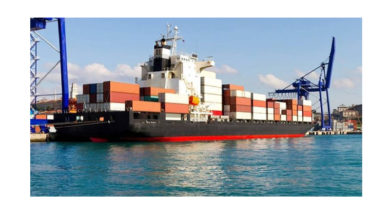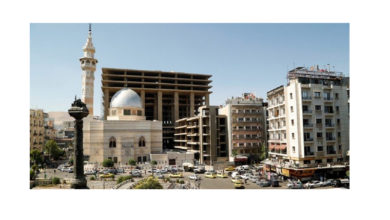Is It Really A Big Bad World?
It is amazing how so many things flatter just to deceive. Think about the following. An outsider viewing the various sectors of the printing industry, perhaps with a view to seeking an investment opportunity, could be forgiven for thinking that the packaging sector should be the first port of call. Our possible investor has only to walk through his local supermarket to see printing of quite inspirational stature and variety. The riot of colour and eye catching design is rampant across boxes, cartons, flexible packaging, jars and tins. Even sacks of dog biscuits look interesting enough to eat.
 What deception, what despair! These past few years with only a limited number of exceptions have been difficult times for packaging printers. A feature across Europe has been the on going consolidation of the market as increasing numbers of packaging printers seek out economies of scale. The Middle East perhaps hasn’t been threatened with these forces in quite the same way, its micro model throws up differing challenges, but packaging print specialists are also finding the ground rules of their business changing. Perhaps one of the few areas of expansion has been in the flexible packaging sector. This area has shown year on year growth approaching 20%, most of it flexo, but increasing amounts of this work is being done UV offset.
What deception, what despair! These past few years with only a limited number of exceptions have been difficult times for packaging printers. A feature across Europe has been the on going consolidation of the market as increasing numbers of packaging printers seek out economies of scale. The Middle East perhaps hasn’t been threatened with these forces in quite the same way, its micro model throws up differing challenges, but packaging print specialists are also finding the ground rules of their business changing. Perhaps one of the few areas of expansion has been in the flexible packaging sector. This area has shown year on year growth approaching 20%, most of it flexo, but increasing amounts of this work is being done UV offset.
Much of this has been brought about by buyers of print packaging in Europe having to take increasing responsibility for the recycling and environmentally friendly disposal of the material used in the packaging. If large supermarkets and retailers in the Middle East are not being subject to environmental pressures yet, they soon will be and should factor such changes into their business plans. The biggest manifestation of change at present is the reduction of ‘outers’ the box that may contain 24 smaller retail sized packs.
This reduction of the amount of packaging print has been driven by a number of factors. Swingeing energy taxes and landfill charges, but perhaps the most telling factor of all, social resentment and revolt. Customers often think they are being taken for suckers by gaudy, complex and difficult to open packages, for there is an awareness now that if a product needs elaborate packaging to sell, then there is a pattern of deception in place.
So for these reasons, almost anywhere in the world, with only the most limited of exceptions, packaging print has become a miserable business to be in and due to the amount of capital invested and the poor returns generated, consolidation across a broad front appears to be the only exit option. Most printers when facing chronically low margins seems incapable of developing a strategy that will tilt the playing field in his favour. Many printers feel that they are operating in an environment that is almost cartel-like in the way print buyers use e-auctions to drive down prices of print.
But why is it thus? Surely the print and its related packaging is the single most important element in a manufacturer’s armoury to influence the public to buy his goods? The package design and placement will influence the consumer, if what is contained gains widespread acceptance, the punter is going to come back time and time again. The word loyalty immediately springs to mind. The contra also is true, if the content is rubbish, good packaging will kill the product as fast as a speeding bullet, for more people will find out very quickly the product is rubbish thanks to its influential packaging. Here then is evidence that packaging has the ability to flatter only to deceive.
 Is the doom and gloom is being over egged? Quite possibly, for there are a number of market driven changes beginning to gather strength suggesting that the balance of economic circumstances are now starting to tilt in a printers’ favour. Dare one express the view that something closer to equality between buyer and seller of print services is coming about.
Is the doom and gloom is being over egged? Quite possibly, for there are a number of market driven changes beginning to gather strength suggesting that the balance of economic circumstances are now starting to tilt in a printers’ favour. Dare one express the view that something closer to equality between buyer and seller of print services is coming about.
Many packaging print buyers are of course facing the same challenges as the printer and there is an increasing awareness of the need to bring the printer fully into the supply chain and so end the vicious cycle where the print is viewed separately as a cost, rather than part of the total product mix.
The printer surprisingly holds two pretty strong cards in his hand. The first is the change in consumer attitudes, is forcing the buyer of print and the printer to consult on a whole range of issues from recycling to how much energy is being used. This is often done in the form of seminars.
The other card is the way printers are now getting access to ever better tools for production. Printers can now offer flexibility in how the print is produced, offer shorter turn round times so reducing run lengths and printing for storage and finally the choice of choice of the most cost effective equipment on which to produce the material. This is a pretty important point and it is worth dwelling on for just a moment or two.
All the main sheetfed manufacturers are directing most of the R&D and marketing budgets into the packaging sector of their businesses, not only in improving the productivity of their machines, but also in providing education support.
 Printers have to come to terms with the fact that poor margins are not the result of low prices but high internal costs. To illustrate this point, for each dollar charged 36 cents are eaten up by handling. This can be the time it takes to shift a printed job from the press to the cutter, load a truck or what ever, but one of the biggest costs is in floor area. If your factory takes 10 days to process a job and has stock in hand for say a month’s production, the 36% figure is easily accounted for. Reduce the time a job takes by 10% and your margin can jump by a factor of at least five, simply because more work can pass through. Also faster production and shorter lead times reduces the most ubiquitous consumer of margins, holding pre-printed stock for clients, but not having the ability to charge a true market cost for the service.
Printers have to come to terms with the fact that poor margins are not the result of low prices but high internal costs. To illustrate this point, for each dollar charged 36 cents are eaten up by handling. This can be the time it takes to shift a printed job from the press to the cutter, load a truck or what ever, but one of the biggest costs is in floor area. If your factory takes 10 days to process a job and has stock in hand for say a month’s production, the 36% figure is easily accounted for. Reduce the time a job takes by 10% and your margin can jump by a factor of at least five, simply because more work can pass through. Also faster production and shorter lead times reduces the most ubiquitous consumer of margins, holding pre-printed stock for clients, but not having the ability to charge a true market cost for the service.
Another production issue that is changing is the use of six colour presses and CTP using FM or Stochastic screening. Some packaging printers do not wash up presses for specials more than two or three times per month.
Perhaps the single biggest factor that is so easily overlooked is printers do not take time out to see how their print is used. They think the job is done when it goes out the door, but this is not so; how it performs on the packing line is absolutely crucial. A printer watching the line may be able to spot a change in the way the carton is formed, perhaps a crease her, an extra die cut there could help the line run faster. Yet surely the most important point of visiting a packing line is it shows the printer cares and as a result builds up additional goodwill.
This point about getting involved in the packers’ problems leads us neatly into the other point being made; environmental and social pressures. Surely the drift towards legislation driven changes must widen the opportunity for printers. Legislation is almost always a reflection of what society wants or can afford and the day is not far off when consigning rubbish to a landfill site will not be tolerated. Elaborate and over designed packaging noted as much for the feeding of conspicuous consumption as being wasteful of scarce resources is being rolled back in favour of functionality. Thus we see a greater demand at least with food and consumable items for flexible packaging, recyclable glass and aluminium and a supply chain more closely linked to the end user rather than where the goods are produced. In Europe the large supermarket chains are facing an increasing pressure of responsibility to recycle not only its own packaging outers but the containers in which the final goods are being sold.
 The printer can play a crucial role in this changing of market dynamics; he either owns the means of providing the packaging or else has access to equipment that will manage the new demands. Many printers in Europe are seeking out niche sectors and are doing so by going to market with a mix of equipment and ideas. Large format flat bed ink jet printers coupled with a Xeikon digital printer can address the requirements of market research and early proving of a new marketing campaign. This sector can be very profitable and when the new campaign is accepted the long run print on folding boxboard can be assigned out to specialists using 162cm presses.
The printer can play a crucial role in this changing of market dynamics; he either owns the means of providing the packaging or else has access to equipment that will manage the new demands. Many printers in Europe are seeking out niche sectors and are doing so by going to market with a mix of equipment and ideas. Large format flat bed ink jet printers coupled with a Xeikon digital printer can address the requirements of market research and early proving of a new marketing campaign. This sector can be very profitable and when the new campaign is accepted the long run print on folding boxboard can be assigned out to specialists using 162cm presses.
A printer is ideally placed to influence the media and materials to be used. He should educate himself on new developments. A recent conference for example hosted a seminar on biodegradable plastics made from corn starch and viscous fibres made from plants. The issue here is not that the printer should be waiting to be asked if he can provide or print using such materials, but that he should be out there looking for ways to use them so that he can lock his client in to a long term relationship.
Packaging is a tough industry but the scales are tipping in favour of wide awake printers and it is cleverness not size that will provide the new elite.





